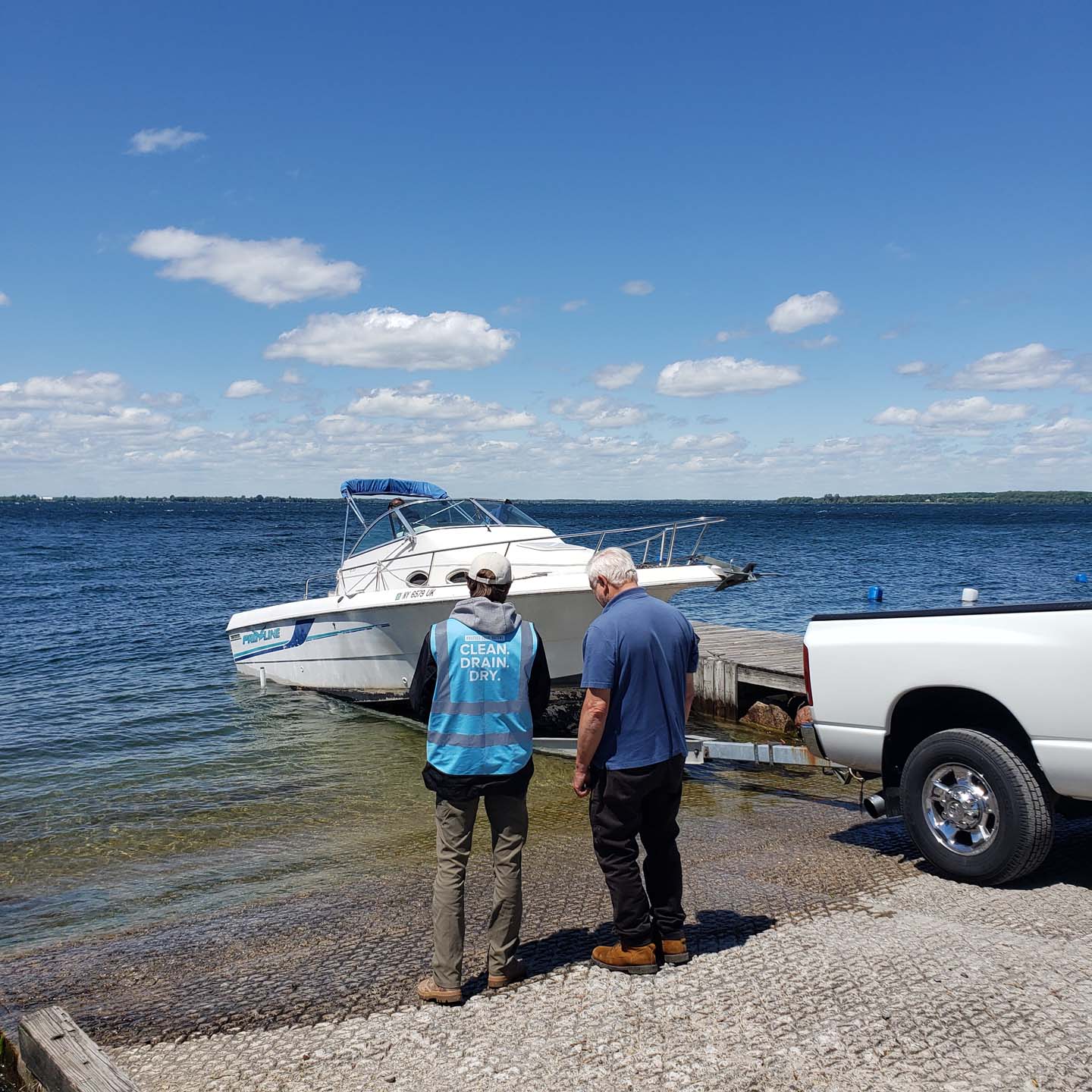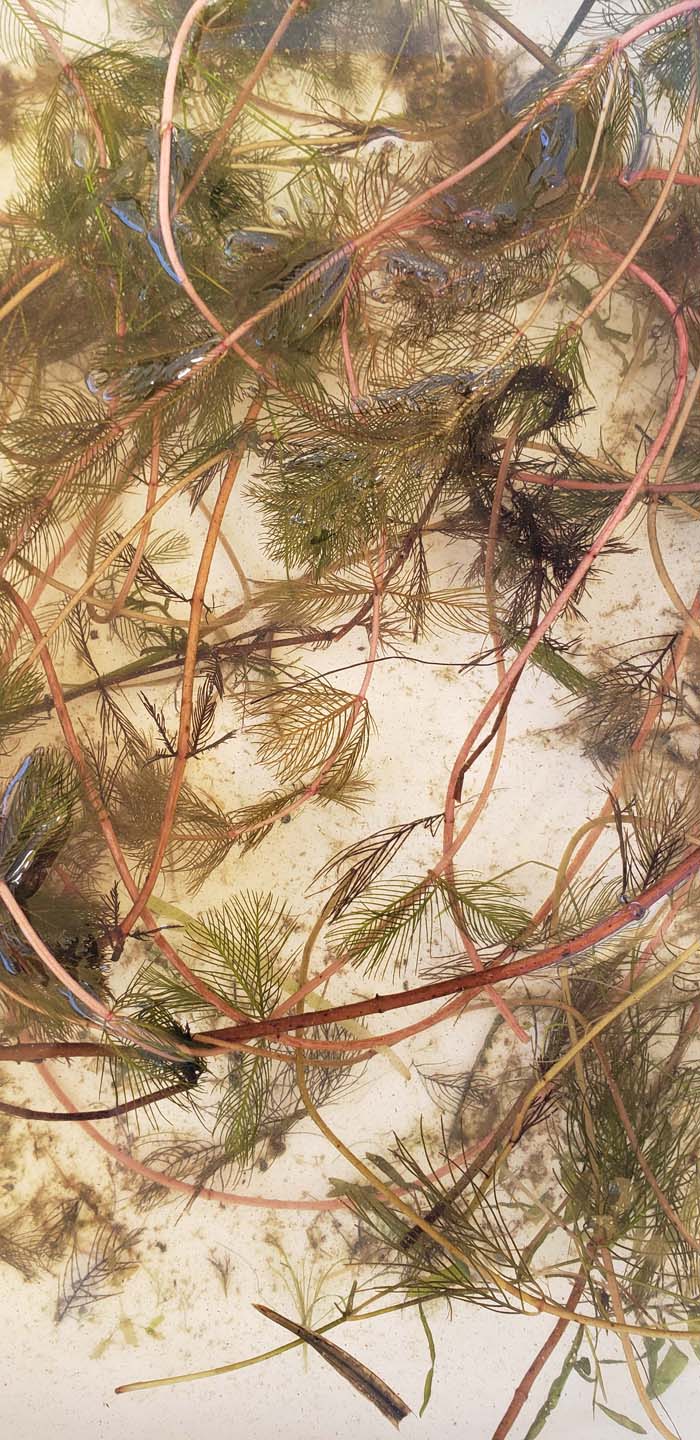For the third season, the Thousand Islands Land Trust (TILT) partnered with the St. Lawrence Eastern Lake Ontario Partnership for Regional Invasive Species Management (SLELO PRISM) to administer the Watercraft Inspection Stewardship Program (WISP) throughout the region.
Twelve stewards were hired and trained to cover over 30 boat and car-top launches across four counties, where they worked to teach the public how to look for and remove aquatic invasive species (AIS) from their boating and fishing equipment.

Although WISP is fairly new to the Thousand Islands region, watercraft inspection programs have been operating in New York since 2000, with the earliest programs beginning in the Adirondack region. The programs were expanded, as part of a larger statewide effort to prevent and address the spread of AIS, with the formation of eight regional Partnerships for Regional Invasive Species Management (PRISMs). Through the New York State Department of Environmental Conservation (NYSDEC), these PRISMs work closely with local organizations such as TILT, the community, and other state agencies to address the spread of invasive species in New York.

As dedicated stewards of the Thousand Islands and St Lawrence River Valley region, TILT knows that good conservation practices require good stewardship of the land and that a healthy river relies on a healthy landscape. TILT began its partnership with the SLELO PRISM because we saw a stewardship opportunity; a need within the community and environment where we could have an immediate tangible impact. Sitting at the heart of the Algonquin to Adirondack corridor (A2A), the Thousand Islands contains critical habitats that filter our waters, are home to abundant wildlife, provide a safe haven for migration, and pull carbon from the atmosphere. Without the protection and stewardship of this landscape, all of this may be lost as threats from development, fragmentation, and invasive species are being compounded by climate change.

WISP was designed to educate the public and engage with the community on actionable ways that boaters and anglers can help prevent the spread of AIS. Research has shown that the Clean-Drain-Dry protocol is currently the most effective method to prevent the spread of invasive species between water bodies because it’s simple and inexpensive. Nearly anyone can do this three-step process. Boaters and anglers are trained to inspect their vessels and equipment themselves, and regularly do so even when stewards are not present. Additionally, the program collects voluntary survey data that is used by numerous organizations and state agencies to both track the spread of AIS and to inform invasive species management decisions throughout the nation, with the potential to connect research across international borders.
The program goes a step further to connect with TILT’s mission to conserve and protect water quality in the Thousand Islands region. Preventing the spread of destructive AIS such as Eurasian watermilfoil, zebra mussels, round goby, and more, translates to real ecological and economic impacts. Poor water quality and reduced biodiversity not only mean a less beautiful St Lawrence River, but also impairments to our infrastructure and negative impacts to our local outdoor-based economy.

Since 2020, TILT’s watercraft inspection stewards have completed more than 32,350 surveys and reached over 78,000 people. An average of 95% of boaters and anglers agreed to an inspection, meaning that over 30,000 people learned how to inspect their vessel and equipment for AIS.
During these surveys, over 2,775 individual AIS specimens were intercepted and removed from boats and equipment, preventing the spread of these organisms to other bodies of water. Additionally, of the boaters and anglers surveyed, 19% resided outside of New York, representing 43 other US states and Canadian provinces.

The scope of these interactions shows just how valuable a program like WISP is to protect and conserve our land and waters in the A2A region and beyond. Engaging the community with achievable steps is essential if we wish to see real change. From water quality to biodiversity, and even safeguarding our River way of life, it's clear that stewardship is essential.
As we come to the end of another successful WISP season, we are grateful for our partnership with SLELO PRISM and the hard work of all of our stewards. The summer boating season may be over, but we wish to remind boaters and anglers engaged in fall activities or winter ice fishing to Clean-Drain-Dry your vessels and equipment and help stop the spread of aquatic invasive species.
By Shannon Walter
Shannon Walter serves as TILT's Education and Outreach Coordinator; she holds a B.S. in Art History from the University of Maryland and a Master’s of Education from Purdue University. With a career in education and the nonprofit sector, Shannon comes to TILT with experience in youth programming and outreach development, where she is responsible for planning and organizing TILTreks and Events, manages the Kenneth Deedy Environmental Internship Program, Education and Outreach Internship Program, and the Watercraft Inspection Steward Program, and promotes TILT through marketing and outreach. When she's not at work, Shannon enjoys hiking and traveling with her husband, Bryan.

Posted in: Volume 18, Issue 1, January 2023, Nature
Please click here if you are unable to post your comment.
